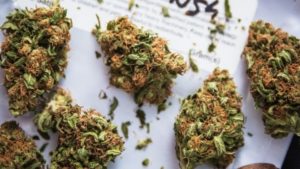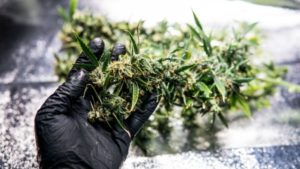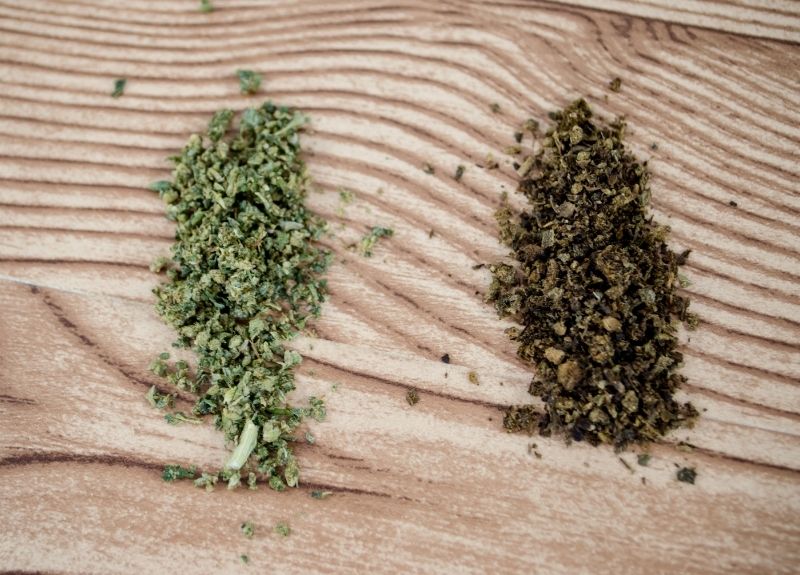Look around any dispensary or online cannabis shop, and you’ll see the words indica or sativa on almost everything. Usually, indica and sativa are used as a classification between different types of cannabis flowers and products.
However, what if we told you that there might not be a difference between them at all?
Continue reading below as we dive into what the difference is between indicas and sativa and if there’s really any difference.
Differences Between Indica and Sativa Effects
Ever since the 70s, cannabis enthusiasts have started categorizing the effects of cannabis as either indica and sativa. People thought since the strains grew differently, then they must feel different too.
More than likely, you’ve heard or read that indicas give a strong body-high, relaxation, and causes couch-lock. You’ve probably also heard that sativas are more energetic and cause a trippy head-high.
However, it turns out that this distinction between indicas and sativas is false. There are plenty of sativa strains that are relaxing and indica strains that cause an energetic high.
In our modern world, we have a much better understanding of cannabis and the compounds within it. Now, we know that all of the compounds within cannabis are what influences our high.
 What Actually Impacts Each Strains’ Effects?
What Actually Impacts Each Strains’ Effects?
All the compounds together to cause different effects in cannabis is known as the Entourage Effect. The Entourage Effect says that all the cannabinoids, flavonoids, and terpenes work together to create different effects.
That means that we need to consider all the compounds in a particular strain of weed. More specifically, we need to look at the THC, CBD, and terpene content.
Remember that THC is the primary psychoactive compound in cannabis. The more THC there is in a strain, the more intense the high will feel, especially in the head.
However, CBD can counteract the effects of THC and is responsible for the relaxing and pain-relieving effects. The more CBD there is in a strain, the more relaxing it’ll be.
That’s why many cannabis enthusiasts are starting to consider the THC to CBD ratio when it comes to a strain’s effects. More THC and less CBD will likely lead to a heady, energetic, and intense high.
More CBD to THC and the strain will probably be very relaxing and cause more of a body high.
On top of that, there are also terpenes to consider. Terpenes are the aromatic compounds responsible for the taste and smell of the cannabis plant.
There are hundreds of terpenes, but there are a handful of common types found in cannabis. Scientists have discovered that terpenes also have an effect on the body.
Terpenes can cause relaxation, anti-inflammation, anti-anxiety, and much more. For example, a strain with a lot of linalool will likely be better for sleep and anti-stress.
A strain with a lot of myrcene will likely have a much more sedative, couch-lock feel to it.
The History of Trying to Classify Cannabis
To figure out how we came up with indica and sativa, we have to look far into the past. First, we need to understand where cannabis plants actually came from.
It’s theorized that cannabis came from Central Asia, which is a vast region that stretches from Afghanistan to Siberia. Humans started using cannabis probably around 12,000 years ago.
Since then, humans have brought cannabis with them around the world.
 The First Cannabis Classification
The First Cannabis Classification
In Europe, cannabis was an especially important crop starting around the 1500s. Cannabis was an essential source of fiber for making ship sails, rope, paper, and as a textile for clothing.
At that time, cannabis in Europe was known as hemp. It wasn’t until 1753 that famous botanist Carl Linnaeus classified cannabis (or hemp) as Cannabis sativa L.
The thing was, Linnaeus suspected that hemp that they grew must be different from an original or wild version. After all, the hemp that he knew was tall, thin, and didn’t have any psychoactive properties.
Not long later, a French naturalist by the name of Jean-Baptiste Lamarck came up with a different classification for cannabis. That’s because Lamarck was sent a sample of a cannabis plant from India.
In 1785, Lamark declared this Indian version a new species and called it Cannabis indica. Lamarck thought that both the one in Europe and this Indian version were close but separate relatives.
Lamark noticed that the Indian version had broader leaves, thicker stems, and had intoxicating properties. Not everyone was convinced, though, and many botanists and naturalists would question if the Indian version was really a new species.
Even the godfather of medicinal cannabis William O’Shaughnessy thinks that the European and Indian cannabis plants are not separate species. As he said in 1843,
“The closest physical resemblance or even identity exists between both [cannabis] plants; difference of climate seems to me more than sufficient to account for the absence of the resinous secretion…”
 Modern Day Cannabis Classification
Modern Day Cannabis Classification
Unfortunately, the debate of whether there are two cannabis species, either sativa or indica, persists until this day. However, it wasn’t until the 1970s that prominent botanists began arguing about the classification again.
Long story short, it became accepted that there were two types of cannabis—Cannabis sativa and cannabis indica.
Since then, growers started calling shorter, broad-leaved, short-flowering cannabis plants indica. On the flip side, they called tall, narrow-leaved, long-flowering cannabis plants sativa.
Since then, the naming convention has stuck, and that’s why we still have indica and sativa today.
A New Classification System
It seems like the cannabis industry is still stuck on an outdated system. Indica and sativa don’t help classify cannabis strains, and they may not even be helpful for growers.
That’s because researchers think that all modern cannabis strains are just hybrids. Perhaps there were separate species at some point, but so much interbreeding has happened that the term indica or sativa is now meaningless.
The only thing we can hope for is a new classification system. In the meantime, you can figure out what a strain might do based on cannabis lab results.
The next time you’re in a dispensary, look at the terpene profile and the ratio between THC to CBD. That alone will tell you more about the strain than sativa or indica ever could.





No Comments